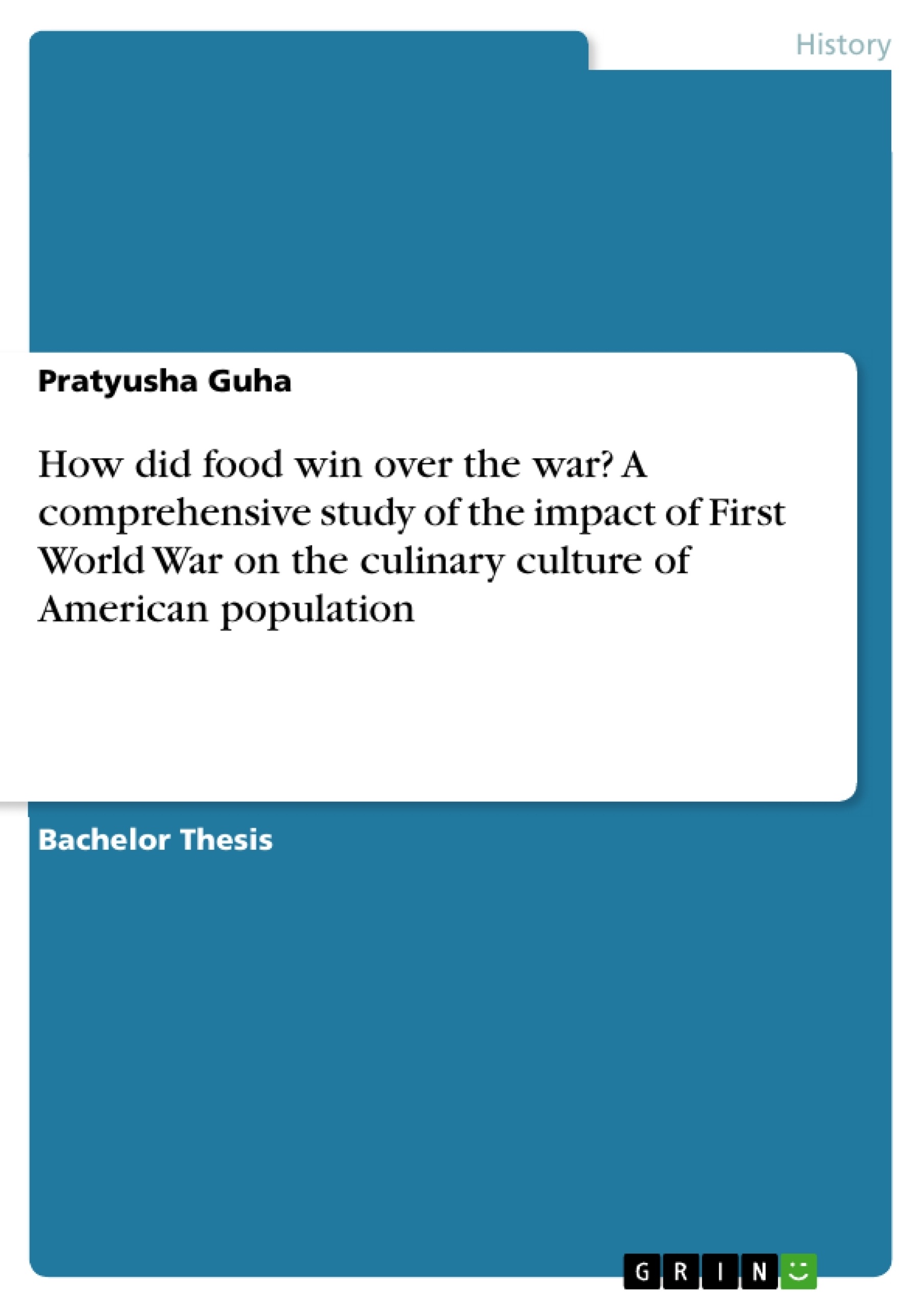Prior to the military involvement of the United States of America in World War I in 1917, American humanitarian participation during the early years of the war was unprecedented due to the nature of its benevolence and significance. The supply and distribution of staple food to her European Allies battling the war had become the foundational humanitarian venture undertaken by the USA government in the twentieth century.
On being encouraged by the government propaganda and campaign, American people voluntarily aimed to preserve their food surplus, with the commitment of donation to the countries at war. The military participation of America in the war in 1917 had prompted the government to establish the United States Food Administration which only amplified the food saving campaigns and agendas to feed the population and soldiers on both the fronts of Europe and America.
My dissertation delves into making of modern American cuisine, to exhibit the inextricable connection between the history of war and food in America; the shortage of food surfaced as a boon in disguise. Amidst the tumultuous atmosphere of food crisis, American gastronomic culture underwent a profound transformation over time and in such a fashion that it modified and moulded the food habits not only of its domestic population, but also of the global population.
Inhaltsverzeichnis (Table of Contents)
- INTRODUCTION
- CHAPTER ONE. A brief of Commission for Relief in Belgium and a prelude to the 1917's Food Conservation.
- CHAPTER TWO. (In)Voluntary Food Conservation . .
- CHAPTER THREE. Cutting across races and forging of a cosmopolitan diet .
- CHAPTER FOUR. Thin body: a demarcator of patriotism (?) .
- EPILOGUE .
Zielsetzung und Themenschwerpunkte (Objectives and Key Themes)
This dissertation explores the impact of World War I on the culinary culture of the American population, focusing on the period between 1917 and the early 1920s. The study examines how the war-time food crisis and government-led conservation efforts transformed American food habits and contributed to the development of a more diverse and modern cuisine.
- The role of food conservation campaigns in shaping American food culture during World War I.
- The influence of scientific advancements in nutrition on food choices and dietary practices.
- The impact of the war on the acceptance and integration of immigrant foods into mainstream American cuisine.
- The connection between food, body image, and patriotism during the war.
- The evolution of American cuisine from a regional and traditional model to a more cosmopolitan and modern approach.
Zusammenfassung der Kapitel (Chapter Summaries)
Chapter One delves into the early years of the 20th century, highlighting the significant role of the Commission for Relief in Belgium in shaping American humanitarian efforts during World War I. It further explores how the war's political exigencies influenced food policies in America, setting the stage for the voluntary food conservation program of 1917. The chapter concludes with a discussion of Herbert Hoover's rise to prominence in the food conservation movement.
Chapter Two examines the role of propaganda in mobilizing the American population to support food conservation measures. The chapter explores instances of public resistance and analyzes why government efforts to promote food conservation were partially successful. It sheds light on the complexities of social and political dynamics during the war, highlighting the challenges faced in achieving widespread participation in food conservation efforts.
Chapter Three explores the triumph of nutritional science over the prevailing ideologies of Eugenics and Euthenics. It examines how the scientific understanding of food and nutrition challenged racial biases and led to the acceptance of a more diverse range of foods in American cuisine. The chapter emphasizes the shift from a racially-defined approach to food consumption to a more inclusive and cosmopolitan perspective.
Schlüsselwörter (Keywords)
This dissertation focuses on the intersection of food, war, and American culture. Key terms include World War I, food conservation, American cuisine, nutrition, Eugenics, Euthenics, cosmopolitan diet, immigrant foods, body image, and patriotism.
- Quote paper
- Pratyusha Guha (Author), 2016, How did food win over the war? A comprehensive study of the impact of First World War on the culinary culture of American population, Munich, GRIN Verlag, https://www.grin.com/document/337112



